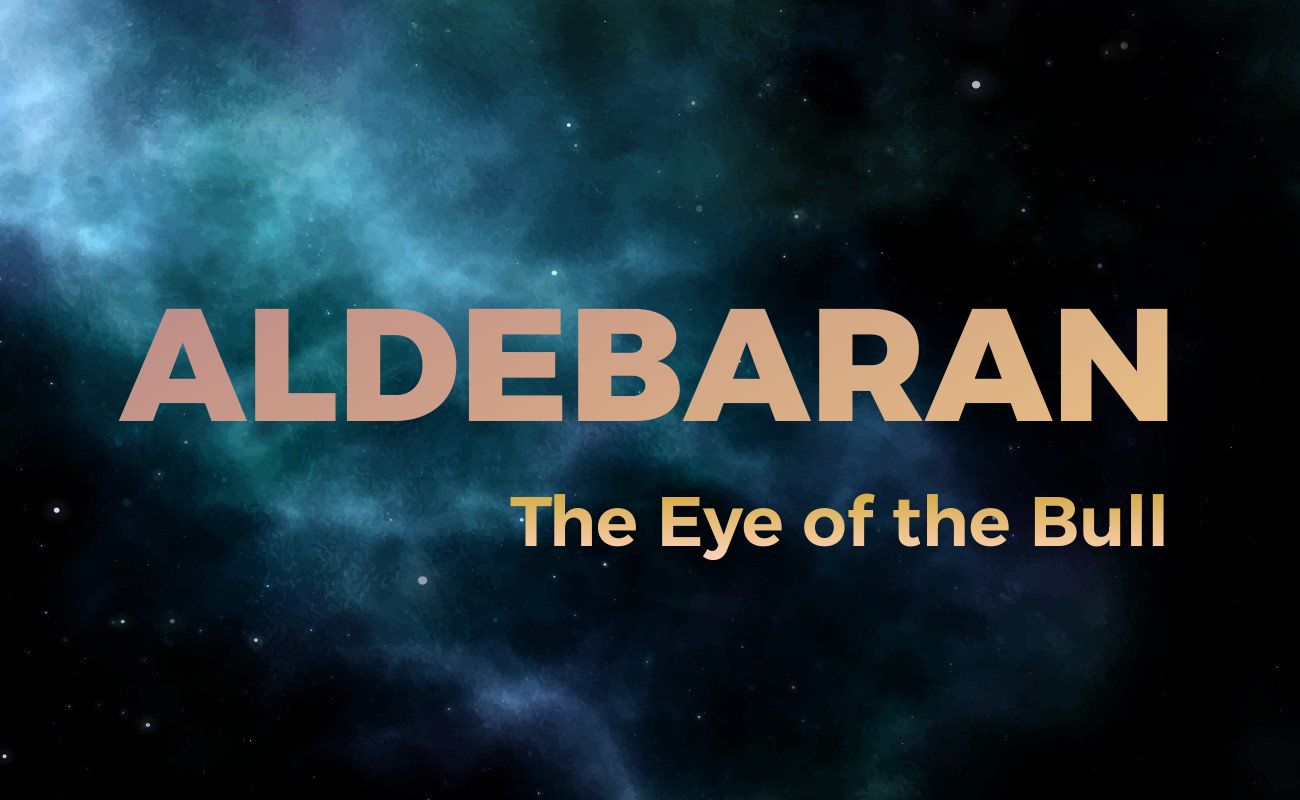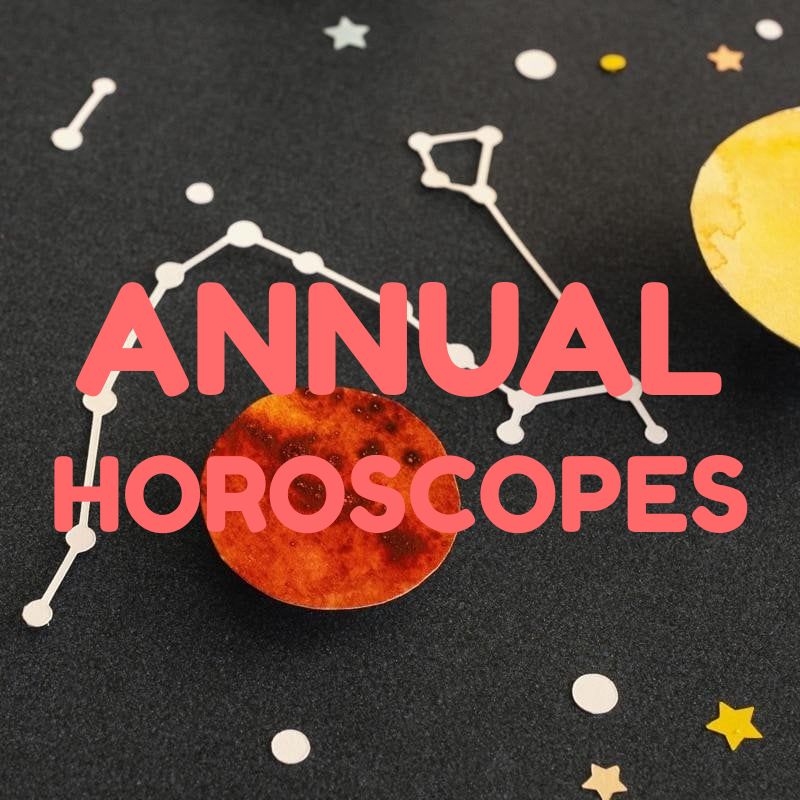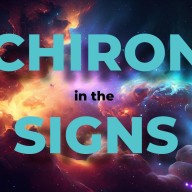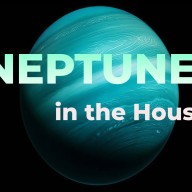Aldebaran is the brightest star in the constellation of Taurus and has been an element of interest among astrologers for thousands of years. Learn its astrological meaning and how this fixed star can further get you to your leadership potential and striving ambition to succeed.
Astronomical information and designation: Aldebaran is a star located in the zodiac constellation of Taurus. It has the Bayer designation α Tauri, which is latinised to Alpha Tauri and abbreviated Alpha Tau or α Tau. Aldebaran varies in brightness making it the brightest star in the constellation, as well as (typically) the fourteenth-brightest star in the night sky. It is positioned at a distance of approximately 65 light-years from the Sun. The star lies along the line of sight to the nearby Hyades cluster. Aldebaran is a red giant, meaning that it is cooler than the Sun with a surface temperature of 3,900 K, but its radius is about 45 times the Sun's, so it is over 400 times as luminous.
Position: 11th degree Gemini (2025- 10° 09'')
Planetary nature: Mars
Suggested orb: 1 deg. approx.
History of the star
In Arabic is Al Dabaran meaning "Follower", i.e. of the Pleiades, because it marked the 2d manzil or second mansion of the Moon, that followed the first, the Pleiades.
Aldebaran is the Greek Omma Boos (ὄμμα βοός), Latin Oculus Tauri, and the early English Bull's Eye; [Bull's-eye is what we call "the centre of a target, which usually carries the highest score", and "a precise or highly effective achievement"].
The great "red giant", war-like Aldebaran is one of the four "Guardians of Heaven" - sentinels watching over other stars. It formed one of the four royal stars of Persia as "Watcher of the East". These were also called archangel stars; this star Aldebaran was Michael - Military Commander of the Heavenly Host. The others were; Gabriel (Fomalhaut) Watcher of the South; Raphael (Regulus) Watcher of the North; Uriel (Antares) Watcher of the West. At one time they marked the two Equinoxes and two Solstices. Aldebaran marked the zero Aries point in 3044 BC, Antares marked zero Libra 3052 BC, Fomalhaut marked zero Capricorn, 2582 BC, Regulus marked zero Cancer 2345 BC. These four stars have been characterised as Horses, reflected both in the famed Four Horsemen of Apocalypse (Revelations 6) and Chariot Horses in the Book of Zechariah - (Morse).
In Indian astrology Rohini, used for this star and for this 4th nakshatra; "A Red Deer" known also as the "The Star of Ascent". Symbol; a Temple or Wagon Regent. Prajapati was the creator.
As the 2nd Arabic manzil, Aldebaran influenced buildings, fountains, wells and gold mines.
As a member of the Hyades it was a "Sow''; the colloquial title among the Roman country-people for the Hyades was Suculae, "the Little Pigs", from Sus, "Sow". It was said that the title might come from the resemblance of this group of stars to a pig's jaws; or because Aldebaran and its companion stars were like a sow with her litter. Pliny accounting for it by the fact that the continual rains of the season of their setting made the roads so miry that these stars seemed to delight in dirt, like swine!
Hebrews rendered this star God's Eye. Another Hebrew name for this star was Aleph, which was also used for the constellation of Taurus. Aben Ezra identified it with the biblical Kimah, probably in connection with all the Hyades and as being directly opposed on the sphere to K'sil, Antares.
In Babylonian astronomy, it marked the 5th ecliptic asterism Pidnusha- Shame, the "Furrow of Heaven", perhaps representing the whole zodiac, and analogous to the Hebrew and Arabic Padan and Fadan, the "Furrow"; so that, before the Ram had taken the Bull's place as Leader of the Signs; the star Aldebaran was Ku, I-ku, or I-ku-u, "the Leading Star of Stars", because it marked the fiducial; in antiquity all ecliptical longitudes were measured from it or from its opposite, Antares. The name of the second of the antediluvian Babylonian kings, the mythical Alaparos, seems connected with this constellation or with the lucida, Aldebaran; and its stars certainly were associated with the second month of the Assyrian year, A-aru, "the Directing Bull," our April-May.
Still more anciently it was the Akkadian Gis-da, also rendered the "Furrow of Heaven".
It was identified with the indigenous Nile figure Sarit (?). (Allen).
Aldebaran was in Gemini from 1286 AD, just around the height of the Christian Crusades against Islam, an interesting indicator of conflict between two world schools of thought. Antares, for the other side in the conflict, went into religious Sagittarius in 1272 AD and showed its superiority, perhaps, since the Crusaders never did dislodge the Saracens. (Dr Eric Morse).
General influence of the star
It gives honour, intelligence, eloquence, steadfastness, integrity, popularity, courage, ferocity, a tendency to sedition, a responsible position, public honours and gain of power and wealth through others, but its benefits seldom prove lasting and there is also danger of violence and sickness. (Robson).
Catastrophe by weather conditions, floods, shipwrecks.
Acknowledged and leading position, but will make enemies through whom danger will threaten. Extraordinary energy. (Ebertin).
Aldebaran conjunct the Ascendant
When Aldebaran is in conjunction with the Ascendant and the Moon, he usually foretells the rising of a "good fellow." This is a position that defines someone who is warm-hearted, nurturing, and intuitive. People with this combination are empathetic and caring about others and so are often very successful in careers that require being sensitive to the needs of other human beings and therefore become loving friends and trusted friends with secrets.
However, astrology's complexity means that not all alignments yield positive outcomes. This is much more sinister when Aldebaran is in conjunction with the Ascendant and also in conjunction with both the Moon and the Lord of the Ascendant. In fact, this triple conjunction is considered to be the sign of a murderer. Like many such astrological correlations, the actual mechanisms involved in such an influence are not known, but the existence of one in a birth chart is a red flag.
Beyond these dramatic outcomes, however, Aldebaran has subtle yet equally active lines through which it exerts its influence on Ascendant. One trait of this combination which comes into obvious notice is a sense of fashion and self-indulgence. Many people possessing this combination in their natal chart have a great sense of style and relish the finer things in life and take great pleasure in their appearance.
The Ascendant brings sensual appetites right at the foreground, ruling the physical body and relationship axis. Such a position gives an extremely heightened sex drive, love of food, and a desire for luxury items. Their life is physically and emotionally attached to their love life or attachment and the materialist comforts of life. These people also enjoy having their relationships and all other worldly pleasures in life thoroughly nursed.
Aldebaran conjunct the Sun
Aldebaran, the prominent star located in the Bull's head, has long been associated with great energy and perseverance. In an astrological chart that involves a conjunction with the Sun, its promise is of very high material honours and position. This is a powerful placement with very great rewards but also very great risks.
Those with the Sun in conjunction with Aldebaran often find themselves in positions of authority and respect. They are natural leaders, admired and looked up to by others. The star's influence can make these individuals iconic figures, symbols of success and determination. But the call for power and status can also take someone into a dangerous path. In their following out of their ambition, they will realise fights and court cases; they may even end up losing all their hard-earned honours.
Since the Sun rules the head and Aldebaran is placed in the Bulls head, it’s not surprising that those with this placement are looked up to as leaders and can become icons. Yet, the bullish energy associated with this placement also brings challenges. Those under its influence can sometimes idolise others to the point of obsession, going to great lengths to pursue their desires. This intense drive can lead to scandal, particularly in matters of the heart.
On the other hand, when this bullish energy is channelled in people in a positive way, especially in the arts, it can achieve incredible fertility and creativity. It is the passion and determination of Aldebaran that can eventually be translated into extraordinary artistic achievement, making these people extraordinarily prolific in their creative efforts.
There is also a most vital moral aspect to the Aldebaran influence. Any person who uses his wealth and position for the good of others will normally, to a higher extent, escape the destructive vibrations of the star. Generosity and honesty diminish the risks of disgrace and disaster. Avarice and selfishness almost invariably result in tragedy. Aldebaran’s conjunction with the Sun demands an extremely high standard of responsibility and moral rectitude.
With Fortuna or its dispositor; poverty. (Robson).
With a malefic in the 4th, 7th, 11th house and the Moon at the same time with Antares, death by a sudden sword thrust, stab or fall.
| Decennial movement | |
|---|---|
| YEAR | DEGREE |
| 1950 | 09° 06' |
| 1960 | 09° 14' |
| 1970 | 09° 22' |
| 1980 | 09° 30' |
| 1990 | 09° 39' |
| 2000 | 09° 47' |
| 2010 | 09° 56' |
| 2020 | 10° 04' |
Read in the same Category





















































